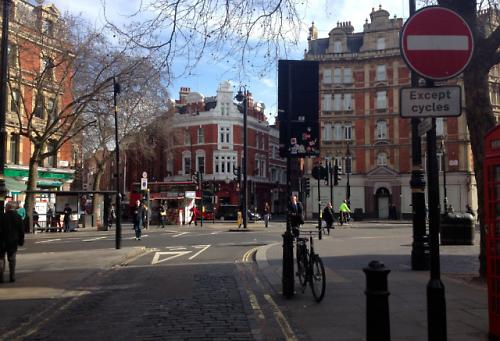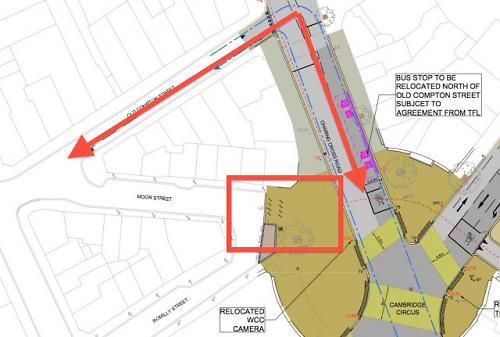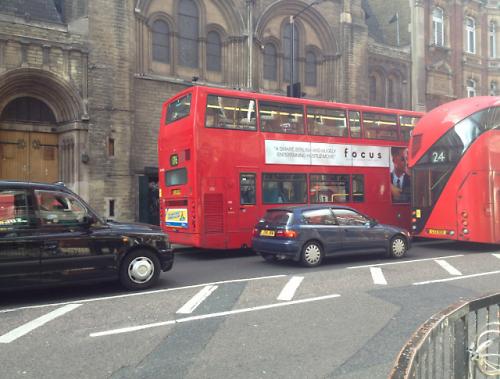- News
- Reviews
- Bikes
- Components
- Bar tape & grips
- Bottom brackets
- Brake & gear cables
- Brake & STI levers
- Brake pads & spares
- Brakes
- Cassettes & freewheels
- Chains
- Chainsets & chainrings
- Derailleurs - front
- Derailleurs - rear
- Forks
- Gear levers & shifters
- Groupsets
- Handlebars & extensions
- Headsets
- Hubs
- Inner tubes
- Pedals
- Quick releases & skewers
- Saddles
- Seatposts
- Stems
- Wheels
- Tyres
- Tubeless valves
- Accessories
- Accessories - misc
- Computer mounts
- Bags
- Bar ends
- Bike bags & cases
- Bottle cages
- Bottles
- Cameras
- Car racks
- Child seats
- Computers
- Glasses
- GPS units
- Helmets
- Lights - front
- Lights - rear
- Lights - sets
- Locks
- Mirrors
- Mudguards
- Racks
- Pumps & CO2 inflators
- Puncture kits
- Reflectives
- Smart watches
- Stands and racks
- Trailers
- Clothing
- Health, fitness and nutrition
- Tools and workshop
- Miscellaneous
- Buyers Guides
- Features
- Forum
- Recommends
- Podcast
news
 The proposed layout of Cambridge Circus
The proposed layout of Cambridge CircusProtest ride against Westminster City Council's zig-zag "quietway" through major junction
Westminster City Council faces further protests today for routing a so-called "quietway" through a major junction and banning bikes from a quiet side street on the route, forcing cyclists to zig-zag along main roads instead.
The ride, which starts at London's first segregated roundabout, Queens Circus, will end up at the busy Cambridge Circus, where Quietway 19 will run, despite mayor Boris Johnson promising in 2013 that quietways would be "slightly slower [than superhighways] but still direct on pleasant, low-traffic side streets for those wanting a more relaxed journey".
While the quietway itself will be completed after 2016, a £1.7m public realm improvement scheme for Cambridge Circus is currently under public consultation. That scheme's only cycling elements are a couple of advanced stop boxes and the banning of cycles to Moor Street, a quiet, direct street on the route.

The London Cycling Campaign's (LCC) Charlie Lloyd said though the Cambridge Circus designs prepare the way for a future cycle route, the designs force cyclists on to "horrible" roads without protecting them from traffic.
He said: "[The design] is inadequate for cyclists on Charing Cross Road and Shaftesbury Avenue. We are expecting something much better when the quietway proposals come out next year.
"We don't know what we are going to see for the quietways, but we want to see much better than this. A quietway through this junction needs protected space for cycling unless they take almost all the motor traffic out."
Lloyd added when nearby nearby Tottenham Court Road improvements are complete as part of the West End Project, banning all but buses, cycles and taxis from 7am-8pm, there will be much less motor traffic on Charing Cross Road, but parts of it will still be "horrible".
Cambridge Circus, on the edge of theatreland linking with Piccadilly Circus and Trafalgar Square, has been described by Westminster Cyclists, a branch of the LCC, as "a hole in the cycle network". Tonight's Circus to Circus ride will give campaigners the opportunity to discuss this and other plans for cycling in the borough.

Moor Street (pictured above and below) runs straight between two sections of the proposed quietway route. Currently one-way for motor traffic, and two-way for cycling, it will be blocked off by cycle racks under public realm improvement plans (marked as back space lines on the below diagram). If banned from using it cyclists would have to zig zag along Charing Cross Road and Shaftesbury Avenue.

Proposed quietway diversion, avoiding Moor Street
Blogger Mark Treasure, chairman of GB Cycle Embassy called the bike stands a "futile" attempt to stop people cycling here. He said: "Rather than closing this road completely, it could of course be turned into an appropriately designed cycle-only cut through, with little detriment to the public space."
"I cannot see this Quietway route being the least bit attractive for anyone, given that no substantive changes are proposed to the actual junction at Cambridge Circus," he said.
Riders, he said, would be dumped on to Charing Cross Road from a quiet side street, Litchfield Street.

Quietway route - Charing Cross Road from Litchfield Street - courtesy Mark Treasure
"There is an ASL there but good luck reaching it (and I would probably advise you not even attempting to do so)."
Westminster City Council came under fire last month for mind-boggling road casualty figures following the death of a woman killed while cycling on a junction where it had earlier rejected cycling improvements.
On its information leaflet Westminster City Council says the chosen Cambridge Circus design was one of two options, this being the one presenting fewer "operational issues".
It says: "Option 1 retains TfL’s proposed cycle route via Moor Street, through the pedestrian crossings and into West Street, and Option 2 re-directs the cycle route via Old Compton Street and Lichfield Street, removing pedestrian and cycle conflict and improving the pedestrian experience overall at Cambridge Circus.
"Option 2 presents fewer operational issues and enables the provision of additional footway space at the junction."
The £1.7m junction redesign is part of the council's "Better City, Better Lives, 'A safer, healthier city'" plan designed to "improve the safety of the junction for all highway users".
There will be wider pedestrian crossings, and the footway will be repaved, with improved public lighting and drainage.

Current Cambridge Circus layout, with Moor Street to the right of the theatre
Westminster City Council has not responded to requests for comment.
Images courtesy of Westminster City Council and Mark Treasure.
Laura Laker is a freelance journalist with more than a decade’s experience covering cycling, walking and wheeling (and other means of transport). Beginning her career with road.cc, Laura has also written for national and specialist titles of all stripes. One part of the popular Streets Ahead podcast, she sometimes appears as a talking head on TV and radio, and in real life at conferences and festivals. She is also the author of Potholes and Pavements: a Bumpy Ride on Britain’s National Cycle Network.
Latest Comments
- Rome73 3 sec ago
It reminds me of the joke that used to do the rounds when I was younger;...
- Creakingcrank 15 min 13 sec ago
Our local recycling centres operate a booking system for cars but allow people on bikes to turn up without warning. They have not, as far as I can...
- don simon fbpe 15 min 21 sec ago
Nothing more boring than a 20mph debate, and no better way to expose the ignorance and selfishness of right whingers....
- joeegg 21 min 52 sec ago
Something that may deter ram raiders may be a small line of cast iron/steel/concrete bollards in front of the window.Relatively cheap to buy and...
- brooksby 36 min 13 sec ago
New bypass for village after waiting 100 years https://www.bbc.co.uk/news/videos/cly5ng6vdv1o
- David9694 2 hours 5 min ago
Down my way, a 200 yard bus gate or 20 mph limit extinguishes all economic and domestic life, so I assume Paris centre-ville has been rendered a...
- TimC340 3 hours 7 min ago
Why didn't RoadCC have a review sample before this article? Then it would be less speculation and more fact. Never mind, DCRainmaker and DesFit...
- mark1a 6 hours 59 min ago
I think the best thing I did when I rode the sportive in 2016 (163km edition from Busigny with all 29 cobbled secteurs) was to fit Elite Pria Pavé...
- mark1a 7 hours 18 min ago
On the plus side, I haven't taken out any over 50 life insurance plans or felt compelled to arrange any prepaid funerals over the weekend, or...
- ktache 9 hours 28 min ago
I don't think I will be converting anytime soon, but thanks for the report, and I wouldn't mind if you update with real world use.
Add new comment
4 comments
I presume that the designer of this route has such confidence in the scheme that they'll take their children on it through rush hour?
There's the (possibly apocryphal) story of how ancient engineers were made to stand under arches they'd built as the scaffolding was removed. We need to start doing this with cycle route design.
The fact that one of the worst boroughs in the country for cycling being where parliament is located is fairly ironic.
Not, it is entirely appropriate.
The government doesn't give a sh1t about people on bikes; the council where the seat of government is located doesn't give a sh1t about people on bikes.
The only irony is that the government is pretending to be pro-cycling, whereas the council fails to even pretend.
The change to Moor St looks like such a retrograde idea, Westminster is the only London borough that's actually trying to reduce filtering permeability.
Even the language is fairly loaded "removing pedestrian and cycle conflict". What data do they have to demonstrate that there is such a problem, that it needs to be resolved? How does it compare to the problem of "pedestrian and motorist conflict", otherwise known as people being run over. That's something that Westminster does seem to have a particular problem with.